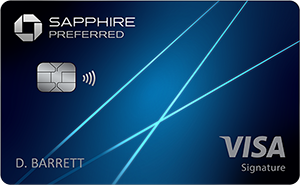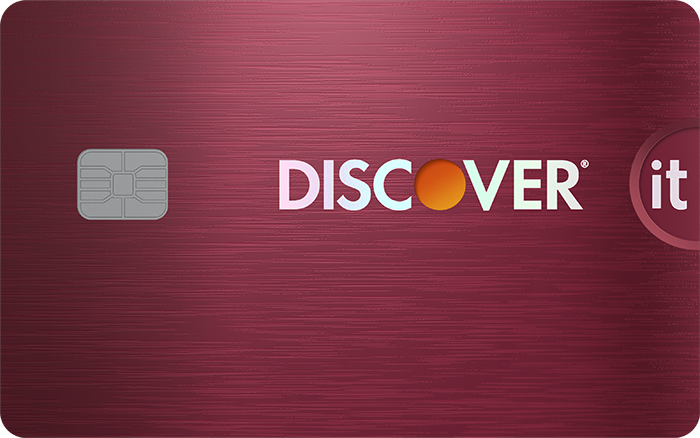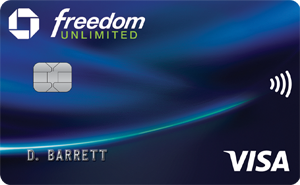The credit limit on your credit card determines how much money you can charge. Once you hit that limit, your card issuer will start declining new charges. The higher your credit limit, the more you can charge before you're cut off.
Credit cards can have spending limits as low as $200 -- or as high as $50,000 or more. With such a wide range of possibilities, what is a good credit limit?
A good credit limit is relative
Any given credit card will have its own specific range of potential credit limits. If you're assigned a limit at the high end of that range, you might consider it a good credit limit. If you're at the low end, perhaps it's a poor credit limit.
Unfortunately, credit card issuers rarely publish their credit limit ranges. In most cases, you won't know what credit limit you'll get until you apply and get approved. While those ranges vary from card to card, the type of card can often give you an idea of what to expect.
For example, student credit cards are designed for people who are just starting to build credit. As a result, they usually have starting credit limits below $1,000. So, if you're assigned a credit limit of $750, that's probably a pretty good limit.
If you applied for a regular cash back rewards card, however, that same $750 limit could be considered a low credit limit. That's because the best cash back cards often have starting limits in the $1,500 to $2,500 range.
Premium rewards credit cards typically have even higher starting credit limits. And luxury travel rewards credit cards -- think top-tier cards with high annual fees -- generally have an initial credit limit of at least $5,000. As such, if you have one of these cards, you might consider a $5,000 credit limit to be bad and a limit of $10,000 or more to be good.
Overall, any credit limit of five figures or more is broadly accepted as a high credit limit.
The main exception to the usual credit limit rules are secured credit cards. The difference between secured and unsecured cards is the security deposit. Secured cards require a cash deposit to open the account. The credit limit of a secured card commonly equals the size of the deposit.
Your credit limit should suit your needs
Even a high credit limit can be considered bad if it isn't high enough to meet your needs. If you apply for a balance transfer credit card and get a $10,000 limit, most people would think that's a good limit. But if you need to transfer $11,000 of credit card debt, that "good" limit isn't quite good enough.
This is a problem common to many people with small business credit cards. A $15,000 credit limit is objectively good. But you might think a $15,000 credit limit is bad if your company needs to charge $25,000 every month. Having to make multiple card payments just to use your card is inconvenient at best.
How to figure out a good credit limit for you
A simple rule of thumb to decide if you have a good credit limit is to consider how much you regularly spend between payments. Ideally, you don't want to have your average credit card balance higher than 30% of your credit card limit.
Why? It comes down to your credit utilization ratio. Your credit utilization ratio is the percentage of your available credit that you're using. For example, say your credit card limit is $5,000. If your balance is $1,000, your utilization rate would be 20% ($1,000 / $5,000 = 0.2, which equals 20%).
Credit utilization is one of the five factors that go into your credit score. A high utilization (over 30%) can cause your credit score to drop quite a bit. And maxing out a credit card can cause a lot of damage. On the plus side, your credit score should rebound after you make a payment and your balance goes back down.
As long as you aren't regularly using more than 30% of your credit limit, you can consider it to be a good limit. Anything higher than that is icing on the cake.
What is the average credit card spending limit?
It's human nature to compare what we have to what other folks have. So you might be wondering about the average credit limit. There isn't an easily navigable list of the average credit limits for each credit card available. But Experian found that the average U.S. cardholder had a credit limit of $30,365 in 2020.
How can you increase your card's credit limit?
One great thing about credit card limits is that they're not usually set in stone. The initial limit you're given at approval is just that: a starting limit. Most credit card issuers will let you increase your credit limit over time.
In some cases, you don't need to do anything to get a higher credit limit. Many issuers will increase your credit limit periodically without even notifying you.
You can also request a credit limit increase. Most card companies let you do this right from your online account. Keep in mind that requesting a credit limit increase may require a hard credit pull. This can drop your credit score by a few points.
When you're thinking about your own credit limit, just remember that it really depends on your credit history and spending needs. And if you need a higher limit, you can work on qualifying for one over time by using your credit card regularly and paying its bills on time each month.
Credit card comparison
We recommend comparing options to ensure the card you're selecting is the best fit for you. To make your search easier, here's a short list of standout credit cards.
| Offer | Our Rating | Welcome Offer | Rewards Program | APR | Learn More |
|---|---|---|---|---|---|
|
Rating image, 5.00 out of 5 stars.
5.00/5
Our ratings are based on a 5 star scale.
5 stars equals Best.
4 stars equals Excellent.
3 stars equals Good.
2 stars equals Fair.
1 star equals Poor.
We want your money to work harder for you. Which is why our ratings are biased toward offers that deliver versatility while cutting out-of-pocket costs.
|
Discover will match all the cash back you’ve earned at the end of your first year. N/A | 1% - 5% Cashback Earn 5% cash back on everyday purchases at different places you shop each quarter like grocery stores, restaurants, gas stations, and more, up to the quarterly maximum when you activate. Plus, earn unlimited 1% cash back on all other purchases—automatically. |
Intro: Purchases: 0%, 15 months Balance Transfers: 0%, 15 months Regular: 17.24% - 28.24% Variable APR |
||
|
Rating image, 5.00 out of 5 stars.
5.00/5
Our ratings are based on a 5 star scale.
5 stars equals Best.
4 stars equals Excellent.
3 stars equals Good.
2 stars equals Fair.
1 star equals Poor.
We want your money to work harder for you. Which is why our ratings are biased toward offers that deliver versatility while cutting out-of-pocket costs.
|
Up to $300 cash back Earn an extra 1.5% on everything you buy (on up to $20,000 spent in the first year) — worth up to $300 cash back. That's 6.5% on travel purchased through Chase Travel, 4.5% on dining and drugstores, and 3% on all other purchases. | 1.5% - 5% cash back Enjoy 5% cash back on travel purchased through Chase Travel, our premier rewards program that lets you redeem rewards for cash back, travel, gift cards and more; 3% cash back on drugstore purchases and dining at restaurants, including takeout and eligible delivery service, and 1.5% on all other purchases |
Intro: 0% Intro APR on Purchases and Balance Transfers for 15 months Purchases: 0% Intro APR on Purchases, 15 months Balance Transfers: 0% Intro APR on Balance Transfers, 15 months Regular: 20.49% - 29.24% Variable |
Apply Now for Chase Freedom Unlimited®
On Chase's Secure Website. |
|

Apply Now for Chase Sapphire Preferred® Card
On Chase's Secure Website. |
Rating image, 4.50 out of 5 stars.
4.50/5
Our ratings are based on a 5 star scale.
5 stars equals Best.
4 stars equals Excellent.
3 stars equals Good.
2 stars equals Fair.
1 star equals Poor.
We want your money to work harder for you. Which is why our ratings are biased toward offers that deliver versatility while cutting out-of-pocket costs.
|
60,000 bonus points Earn 60,000 bonus points after you spend $4,000 on purchases in the first 3 months from account opening. That's $750 when you redeem through Chase Travel℠. | 5x on travel purchased through Chase Travel℠, 3x on dining and 2x on all other travel purchases Enjoy benefits such as 5x on travel purchased through Chase Travel℠, 3x on dining, select streaming services and online groceries, 2x on all other travel purchases, 1x on all other purchases, $50 Annual Chase Travel Hotel Credit, plus more. |
Intro: N/A Purchases: N/A Balance Transfers: N/A Regular: 21.49%-28.49% Variable |
Apply Now for Chase Sapphire Preferred® Card
On Chase's Secure Website. |
Still have questions?
Some other questions we've answered:
FAQs
-
High and low credit limits are relative to the type of card. A high credit limit for a starter card, like a student credit card, would be considered a low limit for a premium card. That said, it's safe to say that any credit limit of five figures or more is a high credit limit regardless of card type.
-
Your income is only one of many factors that go into determining your credit limit. Sure, cardholders with higher incomes typically receive higher credit limits. But there are many other factors, including:
- The type of card
- Your credit score
- Your credit history
- Your existing credit
- Your credit utilization ratio
Some credit cards have a cap on how high the credit limit can range. And your credit history will also have a lot of influence. A person with a high income but a low credit score is less likely to receive a high credit limit than someone with a high score but a lower income.
-
Many starter credit cards have credit limit ranges between $200 and $1,000. In that case, you could consider a limit of $500 or more to be a fairly good starting limit. However, the best credit limit for your first card is one that you can pay back on time each month as you spend with your card.
Our Credit Cards Experts
We're firm believers in the Golden Rule, which is why editorial opinions are ours alone and have not been previously reviewed, approved, or endorsed by included advertisers. The Ascent does not cover all offers on the market. Editorial content from The Ascent is separate from The Motley Fool editorial content and is created by a different analyst team.

